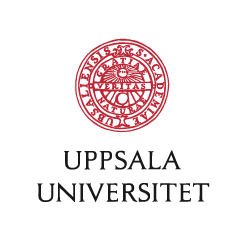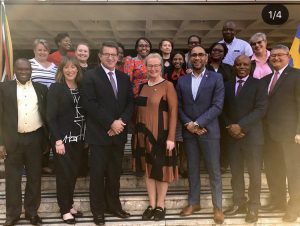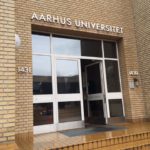(Swedish post published 7 March.)
For several years now, there has been widespread and – to be honest – rather noncommittal discussion on Open Access to scientific publications. Research results should be published in forms that make them freely available, particularly when they derive from publicly funded research. Generally speaking, all stakeholders are in agreement on this. In the latest Swedish research bill, the government writes that “the goal is to implement a full transition to Open Access to research results, including scholarly publications, artistic works and research data, within 10 years” (Govt bill 2016/17:50, p. 107).
In the past few months, an intense debate on the subject has flared up in Sweden and other countries. The transition to Open Access is suddenly surrounded by unresolved problems and sharp, fundamental conflicts between different objectives. This debate is important. No one is against Open Access as such. However, implementing a successful transition to Open Access requires clarity (which problem or problems are we trying to solve?), respect for the freedom of research (in Sweden, researchers have a statutory right to freely choose how and where they publish) and awareness that well-designed scholarly publication systems are an important dimension of the in-built quality assurance systems in research (through peer review prior to publication).
The issue has been brought to a head by Plan S, which was presented in September 2018. The plan is endorsed by a number of heavyweight research funding bodies, primarily in Europe, who have joined forces in ‘cOAlition S’. Put simply, Plan S states that from 2020 on, all research funded by these funding bodies must be published in a way that guarantees Open Access to the publications from day one. At the same time, cOAlition S dismisses the ‘hybrid’ model for Open Access. In January, an implementation plan was presented that contains some clarifications.
In Sweden, Formas (the Swedish Research Council for Environment, Agricultural Sciences and Spatial Planning), Forte (the Swedish Research Council for Health, Working Life and Welfare) and Riksbankens Jubileumsfond (the Swedish Foundation for Humanities and Social Sciences) chose last autumn to endorse Plan S. The Swedish Research Council supports the basic ideas in the plan, but has refrained from joining it because of the tight timetable.
On one level, we all agree. Openness is intrinsic to the very nature of research. Research results are published precisely so that they can circulate and be read and discussed by and with other researchers in academia and beyond, and where relevant by the general public.
At another level, opinions are sharply divided. This is especially true of attitudes to the current publication landscape. In most fields of research, there is a deeply rooted consensus regarding which are the leading journals, and scientists and scholars throughout the world endeavour to publish their best articles in them. Success in publishing in such journals can make or break an academic career. Far from all of these journals currently meet the Open Access requirements made by Plan S. Some of them, though not all, are owned by the major publishing houses whose quasi-monopolistic positions and constantly increasing prices rightly arouse our indignation.
Plan S attempts to achieve a global and universal transition to a new business model in all academic publishing, in which journals charge those who publish articles instead of those who read them. No one knows at this point whether this model has any chance of establishing itself globally. This is one of the problems.
Two powerful interests are set against each other – heavyweight research funding bodies in one corner and dominant media conglomerates in the other. Those who are caught in between are the individual scholars, who would like to publish openly but above all want to publish in the channels that give their research results the widest circulation and highest status, and that best contribute to their chances of establishing themselves as independent researchers and moving forward in their academic career, whether in Sweden, Europe or some other part of the world.
So far, universities have not played a prominent role in the debate. We probably should. And our basic position should then be that, while continuing to respect the freedom of research, we support a transition to Open Access that contributes to quality and relevance, and oppose proposals that limit the freedom of research and/or undermine its quality and relevance.
From this perspective, we, the senior academic leadership of Uppsala University, see four objections to Plan S, apart from the unreasonable timetable.
1. Plan S jeopardises the freedom of research
An important part of the freedom of research is that scholars have the right to freely choose how and where they publish. In Sweden this right is even enshrined in law. Plan S threatens this fundamental freedom, which ultimately serves the common good.
2. Plan S only solves parts of the problem
The plan attempts to solve several problems, which may actually have different solutions. The aim is to achieve lower costs, more innovation and Open Access to research results for taxpayers. Plan S stakes out a path that, if followed, will indeed provide Open Access, but does not guarantee lower costs and has unclear implications for innovation and quality. The arguments that this path is the sole solution are not convincing.
3. Plan S underestimates the issue of quality
Effective publication systems drive quality, and academic career progress builds to a considerable extent on publishing in effective channels. Plan S underestimates the value of the investment made over time, ultimately by the research community as a whole, to establish top-quality journals. When assessing research expertise, it is wrong to attach decisive importance to over-simplified indicators such as the impact factor of specific journals. However, it would be equally wrong to completely ignore the question of whether scholarly work is published in journals with rigorous quality criteria or in channels that are characterised by anything but those qualities. One side-benefit of the current publication systems is that they have contributed to the growth of the standardised publication databases that, in turn, provide the foundation for bibliometric analysis. Plan S risks skewing publication and citation patterns in ways that will affect the possibility of making fair bibliometric comparisons.
4. Plan S confronts researchers with conflicting objectives
It is barely overstating the case to say that by threatening to impose sanctions and cancel grants, the research funding bodies behind Plan S have chosen to make scholars weapons in the battle against journals and publishers. Plan S confronts the individual scholar with unreasonable conflicts between objectives.
There is no denying that Plan S has brought the issue of Open Access to a head, which is good. That said, the approach chosen has fundamental problems. We should instead attempt together to create change in what in fact is an interconnected system of research funding bodies, scholars and editorial boards/publishers, which has taken shape over a long period of time. In reality, well-qualified scholars, overwhelmingly based at our universities, contribute to all parts of the system: as experts or members of the bodies established by research funders to decide on grants, as conductors of research and authors of scholarly publications, and as experts or editors in the journals that publish scholarly work.
If we are to achieve a good transition to Open Access, we need forums for common action to change the system, not shock therapy, which risks undesired side-effects. And instead of being committed to a single path forward, we should encourage a diversity of paths to Open Access. We would like to encourage the Swedish funding bodies that have endorsed Plan S to consider this.
At the time of writing, the news has come that Riksbankens Jubileumsfond has reconsidered its position and announced that, although it intends to stay in cOAlition S and its general campaign for Open Access, it no longer endorses Plan S in its present form. A brave and sensible decision in the present situation.
Eva Åkesson, Vice-Chancellor
Anders Malmberg, Deputy Vice-Chancellor
Katarina Bjelke, University Director
Stellan Sandler, Vice-Rector
Torsten Svensson, Vice-Rector
Johan Tysk, Vice-Rector



















